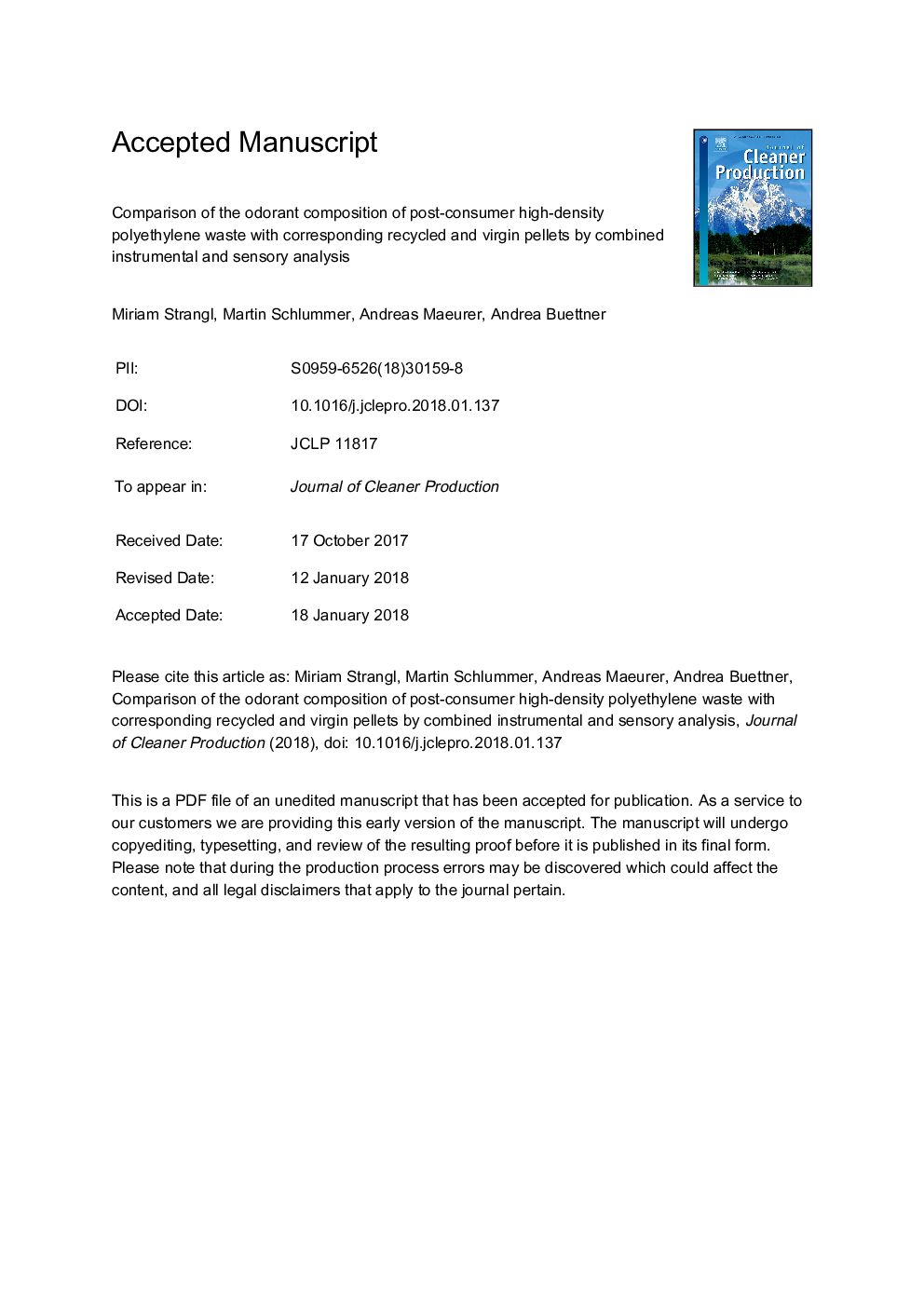| کد مقاله | کد نشریه | سال انتشار | مقاله انگلیسی | نسخه تمام متن |
|---|---|---|---|---|
| 8097733 | 1522072 | 2018 | 34 صفحه PDF | دانلود رایگان |
عنوان انگلیسی مقاله ISI
Comparison of the odorant composition of post-consumer high-density polyethylene waste with corresponding recycled and virgin pellets by combined instrumental and sensory analysis
ترجمه فارسی عنوان
مقایسه ترکیب ضدعفونی از ضایعات پلی اتیلن با چگالی پس از مصرف با پالس های قابل بازیافت و باکره با استفاده از تجزیه و تحلیل ترکیبی ابزار و حسی
دانلود مقاله + سفارش ترجمه
دانلود مقاله ISI انگلیسی
رایگان برای ایرانیان
کلمات کلیدی
موضوعات مرتبط
مهندسی و علوم پایه
مهندسی انرژی
انرژی های تجدید پذیر، توسعه پایدار و محیط زیست
چکیده انگلیسی
Both, for ecological and economic reasons, the recycling of plastics for new or broader applications is currently gaining more and more attention. As high-density polyethylene (HDPE) plays an essential role in various packaging, the recycling of this material is particularly sought for. Thereby, odorous contaminants are a common obstacle when aiming at achieving high-quality HDPE recycled goods. In this respect, revealing the differences in the odorant composition of waste, recycled pellets and virgin pellets provides insights into odor sources and formation pathways and therefore supports the developing of optimized avoidance strategies. For this reason, the odor of post-consumer HDPE waste, corresponding recycled HDPE pellets and virgin HDPE granules was analyzed in the frame of the present study by comprehensive sensory analysis as well as instrumental analysis using high resolution gas chromatography-olfactometry followed by two-dimensional high resolution gas chromatography-mass spectrometry-olfactometry. In total, 32 odorous substances were identified. While some oxidation products were present in all three samples, albeit mostly with much higher smell intensity when regarding the waste and the recycled pellets, a number of terpenes as well as phenylpropanoids were found only in the HDPE waste and recycled material and, in most cases, with high sensory abundance. These odorants are likely to stem from fragrances used in cosmetics and washing/cleaning agents. Moreover, comparative odor extract dilution analysis (cOEDA) revealed that the applied conventional recycling process resulted only in a slight reduction of the odor pollution; moreover, it could be shown that no new odorants were generated to any relevant extent. Accordingly, this study shows that further optimized strategies for odorant removal from post-consumer recycled HDPE material are required.
ناشر
Database: Elsevier - ScienceDirect (ساینس دایرکت)
Journal: Journal of Cleaner Production - Volume 181, 20 April 2018, Pages 599-607
Journal: Journal of Cleaner Production - Volume 181, 20 April 2018, Pages 599-607
نویسندگان
Miriam Strangl, Martin Schlummer, Andreas Maeurer, Andrea Buettner,
